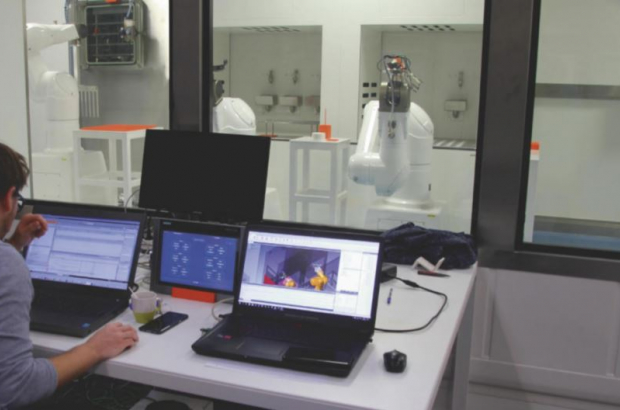- Daily & Weekly newsletters
- Buy & download The Bulletin
- Comment on our articles
Innovative start-up to revolutionise bone tissue transplantation
The Walloon company Texere Biotech has created the world’s first automated robotic bone graft production system, which revolutionises the processing of human tissue.
Bone tissue is the second most transplanted part of the human body after blood. Bone grafts are useful for fixing bones damaged by trauma and growing new bone where a loss has occurred after a fracture or around an implant such as a knee replacement. Depending on the type of injury, the bone used for a graft can come from a patient’s own body, can be synthetic or can be an allograft – tissue from a living or deceased donor that has been stored in a tissue bank.
Allograft bone transplants are commonly used in hip and knee reconstruction. The risk of infection associated with using allografts is low since additional surgery is not needed to acquire the bone, and the risk of rejection is minimal as the bone contains no living cells. There’s also no need to match blood types between the donor and recipient, since the allograft contains no living marrow.
However, preparing the allografts themselves from donated bones is a lengthy and costly manual process, which also carries a risk of contamination. This motivated cell and tissue engineering specialist Denis Dufrane to research other production methods, while he was the head of a tissue bank in Belgium. “I experienced so many difficulties in producing allografts manually that I wanted to automate the process, simplify it and improve their quality,” he says.
In 2016, with his father, Jean-Jacques, and robotics expert Olivier Bühlmann, Dufrane set up Texere Biotech in Frasnes-lez-Gosselies, Hainaut. In less than three years, they have created the world’s first fully functioning, fully automated robotic processing system for creating allografts from bone tissue held at tissue banks.
The production line consists of six robots that progressively treat femur bone heads. Living bone marrow matter is made inert and the bone is decontaminated using viral inactivation and sterilisation processes. Using computerised visual recognition techniques, it is whittled away to produce small, freeze-dried bone allograft blocks, which can then be stored by the tissue bank until needed. The robots even take care of labelling the final product.
Compared with existing techniques, the automated process is cheaper and triples the amount of tissue recovered. “Our process offers full traceability and guarantees the safety and quality of the final product by way of an independent and personalised treatment for each femoral head, to a level unmatched before today – with a revolutionary improvement in quality and with reduced processing time and cost,” says Dufrane.
The first production line was inaugurated in December 2018, in the presence of Pierre-Yves Jeholet, vice-president of Wallonia’s government and minister of economy, industry, research, innovation, digitalisation, employment and training. Loans and recoverable advances from Sambrinvest and the Walloon Region played a key role in the project. “Without Walloon support we couldn’t have completed the project,” says Dufrane.
The production line is capable of producing 30,000 bone grafts each year and the company is offering its services to bone banks. Texere also foresees exporting its technology as a plug-in, ready-to-start turnkey solution for tissue banks in other countries, which includes training personnel and full technology transfer through a licensing agreement.
Starting with European markets, Dufrane hopes the automated process will “benefit the greatest number of patients worldwide”.
This article was first published in the WaB magazine



















